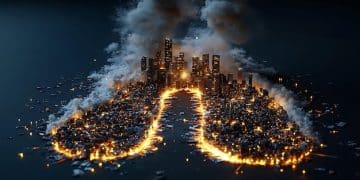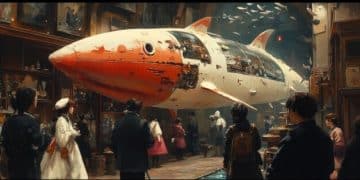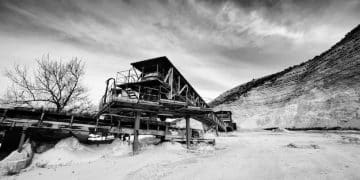Before CGI: The Stop-Motion Magic of ‘Jason and the Argonauts’ (1963)
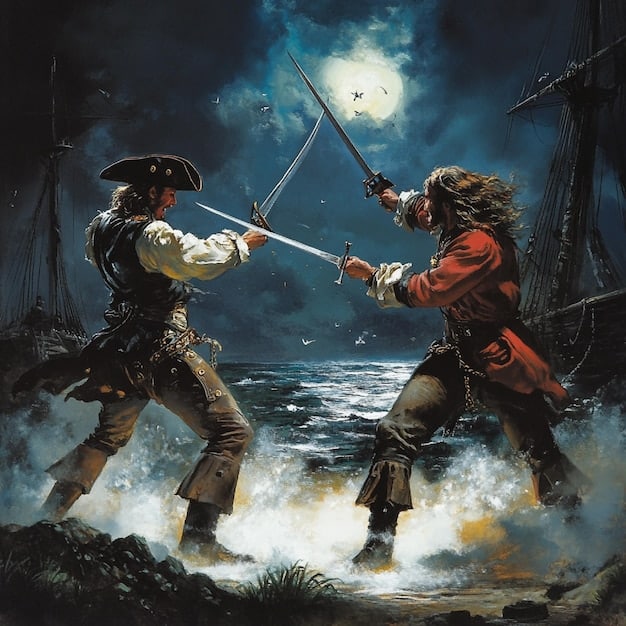
Before CGI: Marveling at the Stop-Motion Animation of ‘Jason and the Argonauts’ (1963) showcases the groundbreaking artistry of Ray Harryhausen. This film remains a testament to the power of practical effects, captivating audiences with its iconic stop-motion creatures and timeless adventure.
Step back in time to a world before computer-generated imagery dominated the silver screen. Before CGI: Marveling at the Stop-Motion Animation of ‘Jason and the Argonauts’ (1963) reveals a stunning achievement in filmmaking. This classic adventure, brought to life by the legendary Ray Harryhausen, still amazes audiences with its meticulously crafted stop-motion effects.
Have you ever wondered how filmmakers created fantastical creatures and epic battles before the advent of CGI? Let’s delve into the enchanting world of ‘Jason and the Argonauts’ and explore the artistry that made it a timeless masterpiece.
The Genius of Ray Harryhausen
Ray Harryhausen wasn’t just an animator; he was a visionary. He elevated stop-motion animation to an art form, infusing his creations with personality and realism. His influence on special effects cinema is immeasurable, and his work on ‘Jason and the Argonauts’ is arguably his most famous.
Early Influences and Techniques
Harryhausen’s passion for animation began with ‘King Kong’ (1933). Inspired by Willis O’Brien’s stop-motion work, Harryhausen dedicated himself to mastering the craft. He refined existing techniques, developing his own unique style that blended artistry and technical precision.
- He employed a technique called “Dynamation,” allowing live-action characters to interact seamlessly with stop-motion creatures.
- His meticulous attention to detail extended to every aspect of his animations, from the skeletal structure of his creatures to the subtle nuances of their movements.
- Harryhausen dedicated months and years to planning and animating for ‘Jason and the Argonauts’, showcasing his commitment to perfection.
‘Jason and the Argonauts’ (1963) was not just a film; it was a showcase for Harryhausen’s skills. He turned the film into something truly special.
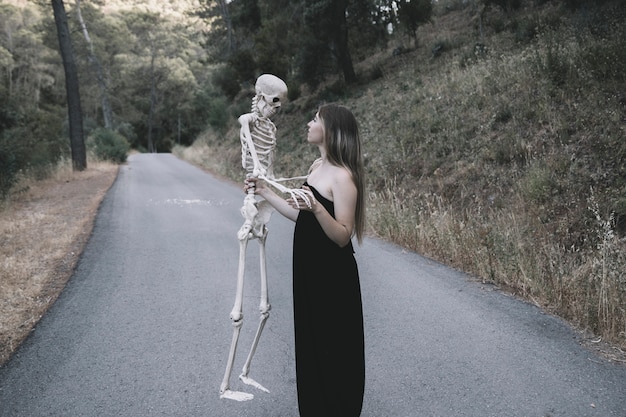
Ray Harryhausen continued to work on movies for decades to come after ‘Jason and the Argonauts’ (1963) helping to inspire future generations of animators.
‘Jason and the Argonauts’: A Synopsis
Before diving deeper into the stop-motion marvel, let’s briefly recap the storyline of ‘Jason and the Argonauts’. This epic tale of adventure, based on Greek mythology, features Jason’s quest for the Golden Fleece.
The Hero’s Journey
Jason, rightful heir to the throne of Thessaly, embarks on a perilous journey to retrieve the Golden Fleece and reclaim his kingdom. He assembles a crew of legendary heroes, including Hercules, to sail aboard the Argo and face mythical challenges.
- The voyage takes them through uncharted waters, encountering harpies, sea monsters, and the clashing rocks of the Symplegades.
- Jason and his crew battle formidable foes, including a bronze giant named Talos and the unforgettable skeleton army.
- The narrative combines elements of courage, treachery, and divine intervention, making ‘Jason and the Argonauts’ a captivating cinematic experience.
The story of ‘Before CGI: Marveling at the Stop-Motion Animation of ‘Jason and the Argonauts’ (1963)’ is one of a kind.
Harryhausen wanted the movie to have a classic hero’s arc, and that is just what he delivered in the end!
The Iconic Stop-Motion Sequences
What truly sets ‘Jason and the Argonauts’ apart is its breathtaking stop-motion animation. Several sequences have become legendary, showcasing Harryhausen’s artistry at its finest. These scenes are what people usually think about when they hear ‘Jason and the Argonauts’ (1963).
Talos: The Bronze Giant
The encounter with Talos stands out as a remarkable feat of animation. This colossal bronze statue, brought to life through stop-motion, intimidates the Argonauts with its imposing size and powerful movements. Harryhausen skillfully conveys Talos’s weight and strength, making him a truly unforgettable antagonist.
The Harpies’ Attack
Another memorable sequence involves the harpies, grotesque bird-like creatures that torment the blind seer Phineas. Harryhausen’s design and animation of the harpies are unsettling and dynamic, adding a layer of horror to the film’s fantasy elements.
The Unforgettable Skeleton Army
The battle against the skeleton army is arguably the most iconic scene in ‘Jason and the Argonauts’. The fluidity and coordination of these animated skeletons are astounding, especially considering the limitations of stop-motion technology. These skeletons make up a large amount of what makes this film a classic!
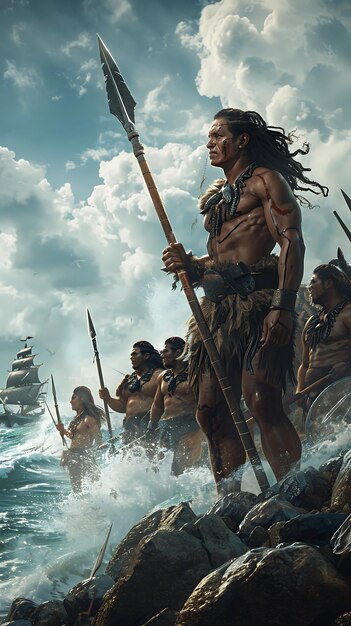
Harryhausen made stop-motion animation into an amazing spectacle!
The Enduring Legacy of Stop-Motion
In an era dominated by CGI, the stop-motion animation of ‘Jason and the Argonauts’ continues to resonate with audiences. It serves as a reminder of the artistry and dedication that went into creating special effects before the rise of digital technology. There is something special about enjoying ‘Jason and the Argonauts’ (1963) in the modern-day.
A Handcrafted Art Form
Stop-motion animation is a painstaking process that requires animators to manipulate physical models frame by frame. Each movement is carefully crafted, giving the animations a unique sense of tangibility and charm. It makes all who see it think of the good old days.
Practical Effects vs. CGI
While CGI offers unparalleled flexibility and realism, practical effects provide a tactile quality that is often missing in digital creations. Stop-motion animation, like that in ‘Jason and the Argonauts’, possesses a distinct aesthetic that sets it apart from its computer-generated counterparts. Many feel that stop-motion animation has more charm to it.
Inspiring Future Generations
‘Jason and the Argonauts’ has inspired generations of filmmakers and animators. Its influence can be seen in countless fantasy films and special effects showcases. Ray Harryhausen’s work has proven that you can still make great movies without a bunch of CGI.
It is important now more than ever to look back on all of the creations before the modern age.
Behind the Scenes: The Making of a Masterpiece
Creating the stop-motion effects in ‘Jason and the Argonauts’ was a monumental task. Ray Harryhausen and his team spent years meticulously crafting the animation, employing innovative techniques and problem-solving skills.
The Dynamation Process
Harryhausen’s Dynamation process involved projecting live-action footage onto a translucent screen, allowing him to animate his stop-motion creatures in sync with the actors. This technique created the illusion that the creatures were interacting directly with the human characters.
Challenges and Innovations
Animating the skeleton army, in particular, posed significant challenges. Harryhausen had to painstakingly coordinate the movements of multiple skeletons, ensuring that they moved believably within the live-action setting. This sequence required months of dedicated work and creative problem-solving.
- To create the skeleton movement effectively with practical effects required a lot of labor.
- Ray Harryhausen poured everything that he had into this specific scene and it paid off.
- Without this scene, the movie would not be as well remembered as other movies.
Every small detail of the movie has been pored over for years and years to come!
Ray Harryhausen would have never thought that ‘Jason and the Argonauts’ (1963) would be watched by tons of people for eras to come!
The Story Behind the Scenes of
‘Before CGI: Marveling at the Stop-Motion Animation of ‘Jason and the Argonauts’ (1963)’
The production of ‘Jason and the Argonauts’ wasn’t just about animation. It combined mythology, great storytelling, and complex visual effects. The making-of story shows how much work went into making this movie a beloved piece of cinema.
Casting and Performances
The cast, led by Todd Armstrong as Jason, delivered compelling performances that brought the mythical characters to life. The actors skillfully interacted with the stop-motion creatures, enhancing the film’s sense of realism and adventure.
Sound Design and Music
Bernard Herrmann’s score heightened the excitement and drama of ‘Jason and the Argonauts’, making the key scenes even more memorable. The sound effects also played a vital role in bringing the stop-motion creatures to life. The music in ‘Jason and the Argonauts’ (1963) truly sets the stage for something great.
Critical Reception and Popularity
Upon its release, ‘Jason and the Argonauts’ became a box office success and received critical acclaim for its groundbreaking special effects. Audiences were enthralled by the film’s imaginative storytelling and visually stunning animation, ensuring its place in cinematic history. It is an absolute classic through and through.
The legacy of Ray Harryhausen continues to be upheld by the modern age in countless ways.
| Key Point | Brief Description |
|---|---|
| 🎬 Stop-Motion Magic | Harryhausen’s skillful stop-motion animation brought mythical creatures to life. |
| ⚔️ Iconic Scenes | Talos, harpies, and the skeleton army are cinema’s best stop-motion moments. |
| 🛡️ Practical Effects | The film highlights the beauty and tangibility of pre-CGI effects. |
| 🏺 Legacy | The film influenced future generations of artists and remains a classic. |
Frequently Asked Questions
Stop-motion animation is a technique where physical objects are manipulated in small increments between individually photographed frames, creating the illusion of movement when the series of frames is played as a continuous sequence.
Ray Harryhausen was a pioneering visual effects creator known for his stop-motion animation in films like ‘Jason and the Argonauts,’ ‘The 7th Voyage of Sinbad,’ and ‘Clash of the Titans.’ He is considered one of the most influential figures in special effects history.
The skeleton fight scene is remarkable for its smooth and dynamic animation. Ray Harryhausen’s skill and patience in animating multiple skeletons frame by frame made the scene one of the most iconic in the history of stop-motion animation. The coordination needed to make this happen made it extremely difficult.
Dynamation involves projecting live-action footage onto a screen behind the animated models, allowing the live actors and stop-motion creatures to appear in the same shot. This technique created the illusion that the animated creatures were interacting directly with the human characters.
Despite advancements in CGI, the handcrafted quality and artistry of the stop-motion animation in ‘Jason and the Argonauts’ still captivate audiences. It showcases the tangible charm and unique aesthetic that practical effects can bring, which is extremely rare to see in modern movies.
Conclusion
Before CGI: Marveling at the Stop-Motion Animation of ‘Jason and the Argonauts’ (1963) reminds us of the artistry and craftsmanship that defined special effects before the digital age. Ray Harryhausen’s stop-motion masterpiece continues to inspire and captivate, proving that imagination and dedication can create timeless cinematic moments.
The work of Ray Harryhausen still inspires new and old generations today. It remains a testament to the power of practical effects in storytelling.
